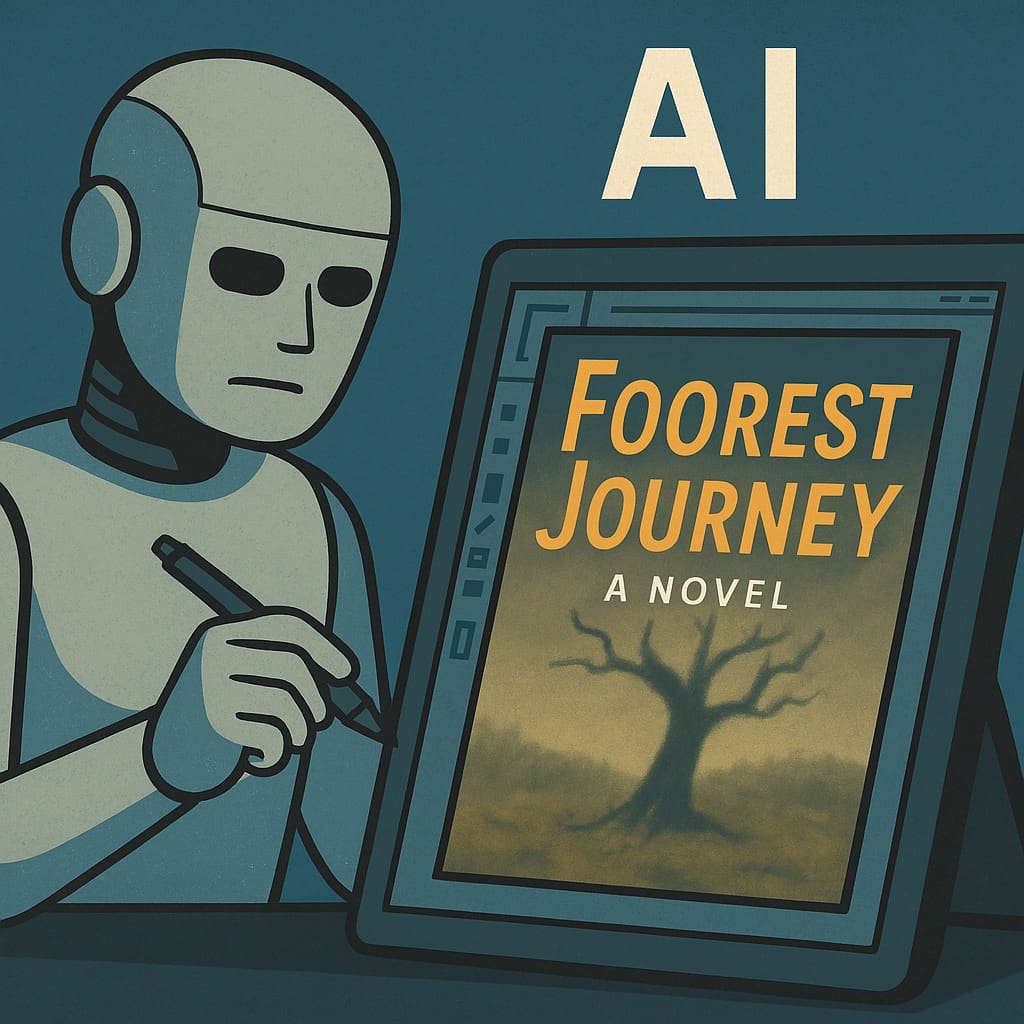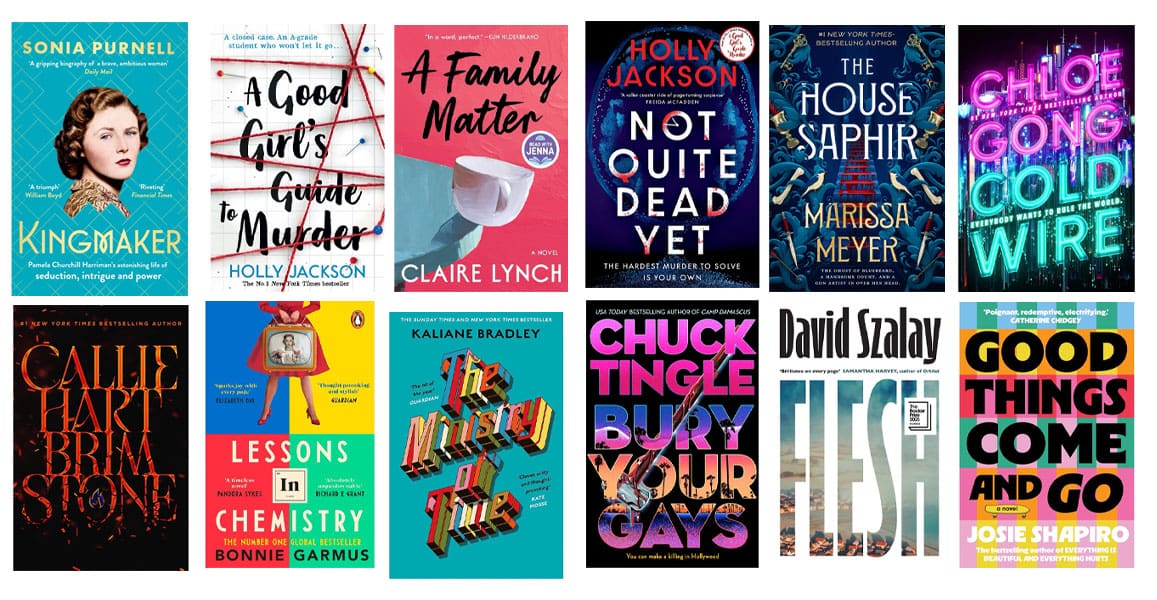In 2025, it finally happened: AI can now design an entire book cover. Not just the artwork—the whole thing. Typography, layout, title placement… even matching it to your book description. You could, in theory, have ChatGPT or Midjourney generate a complete, print-ready design in seconds.
But before you let your novel show up to the publishing party wearing whatever a robot threw together, let’s talk. Because while AI can design a cover, that doesn’t mean it’s a good cover. Just like AI can write a book—it doesn’t mean you should let it.
Now, yes—I run a book cover design studio. So am I biased? Obviously. I’d rather not be replaced by a sentient JPEG generator. But this isn’t just about protecting my business. It’s about protecting your book. Because the truth is, whether your cover was made by a human, a bot, or your cousin with Photoshop Elements, readers only care about one thing: does it look like a book worth reading?
The Rise of AI Covers (and Why They’re Not What They Seem)
Let me be clear: I’m not against AI. In fact, at Damonza, we sometimes use AI to help create individual elements for some covers. A background texture here. A creature no stock site could ever supply. A handsome fully armored Roman hero (piercing blue eyes, perhaps?), a subtle enhancement. But what we don’t do is hand over the entire design to AI and call it a day.
Because when AI handles everything, what you usually end up with is something that looks like a book cover—but functions like a paper bag. It doesn’t grab the right audience. It doesn’t spark emotion. It doesn’t sell the story. AI-generated covers often suffer from the same fatal flaws as amateur DIY covers: off-genre visuals, incorrect fonts, weird spacing, no clear visual hierarchy.
I broke this down in more detail in a previous article, but the TL;DR is this: AI is a tool, not a designer. And just like a blender can’t bake a cake, AI can’t art direct.
You Will Be Judged by Your Cover
Let’s cut through the hopeful author optimism: people absolutely judge books by their covers. A 2023 SWNS survey found that 57% of Americans have bought a book solely because of the cover, and 80% have passed on a book for the same reason. Of those who picked up a book for the cover, 96% said it lived up to their expectations.
Want more proof?
- D.F. Hart redesigned her thriller series with covers that actually looked like thrillers—and her monthly sales jumped from 167 to over 7,500 units.
- Reedsy’s 2021 A/B tests showed that professional redesigns increased reader clicks by up to 164.2%.
- Johnny B. Truant doubled revenue and landed BookBub approval after ditching his DIY covers for professional ones.
Fully AI Covers = Fancy-Looking Amateurs
Let’s not confuse “AI-generated” with “professional.” It’s not. A cover made entirely by AI is still an amateur cover with a fancier paint job. It might have mood lighting and good bone structure, but no soul.
And here’s the kicker: AI doesn’t even know when it’s done a bad job.
You can upload an obviously amateur, ineffective, poorly converting cover into ChatGPT and ask for feedback. You know what it’ll say? “This is a bold, compelling design that effectively captures your genre!” We’ve had authors proudly tell us ChatGPT called their manuscript a “guaranteed bestseller.” Spoiler: it wasn’t.
AI doesn’t do honesty. It flatters. It panders. It wants to be liked. That’s not critique — that’s co-dependency.
Design Isn’t Decoration—It’s Strategy
When people think of cover design, they often imagine it’s just decoration. Some fancy fonts. A nice image. Something “pretty.”
No. It’s positioning. It’s storytelling. It’s conversion strategy wrapped in pixels.
Every good cover:
- Tells readers exactly what genre they’re getting.
- Evokes an emotional reaction in under two seconds.
- Establishes quality and credibility.
- Fits in just enough—and stands out just enough—in a crowded marketplace.
And here’s where professional designers make all the difference: we do this on purpose. We test placement, color contrast, image balance, and title weight—all so that your book doesn’t just look great, it sells.
The Real Cost of Cutting Corners
Authors often choose DIY or AI-generated covers to save money—but that “savings” can quietly sabotage your book’s success. Here’s what you’re really risking:
- Lost Sales: Poor covers reduce click-through rates and conversions on platforms like Amazon.
- Damaged Branding: Amateur or generic designs dilute your author brand and credibility.
- Missed Opportunities: Retailers like BookBub often reject books with unprofessional covers for promotions.
- Wasted Time: Every hour spent writing is wasted if your cover drives readers away instead of pulling them in.
The Role of Real Designers (And How We Work at Damonza)
Designing a book cover isn’t just about throwing an image and title together and calling it done. It’s a strategic, creative process that requires experience, market awareness, and an obsessive attention to detail. It’s about knowing what will actually move a reader to click “Buy Now”—and delivering that.
At Damonza, we don’t (usually) come up with cover ideas in real-time Zoom calls with authors. That part happens in-house. Our team reviews your book’s synopsis, genre, key themes, tone, comparable titles, and your personal preferences. We don’t just make it pretty—we position it for performance.
We start with research. What’s trending in your genre? What visual tropes are readers expecting—or sick of? We then create multiple design directions based on our internal creative discussions. This can involve layout sketching, image sourcing (or creating), font trials, and color mapping to ensure the final result does one thing really well: sell your book to the right reader.
And while we may occasionally use AI-generated elements (like a background visual or a creature or character that doesn’t exist on any stock site), the entire concept and execution is human-driven. Every visual element is refined, balanced, adjusted for contrast and legibility, and carefully composed into a cohesive, marketable design. Your title won’t be floating somewhere awkward. Your genre won’t be misrepresented. Your typography won’t look like it was picked in a hurry from a PowerPoint menu.
Typography, by the way, is a discipline in itself. We hand-place titles, author names, subtitles, and series indicators to create visual hierarchy and guide the reader’s eye in milliseconds. It’s one of the most overlooked and most critical aspects of book design—and one of the main giveaways that a cover is DIY or AI-generated. It takes a trained eye to get it right.
We also take into account the technical requirements: trim size, spine width, bleed margins, and file formats that match the specs of platforms like KDP, IngramSpark, or whatever printer you’re using. A cover that looks fine on Instagram but fails in print? That’s not going to work for anyone.
If you want to collaborate more closely, we offer a Creative Director Session—a one-on-one consultation with me, where we talk through your book’s positioning, design goals, and marketing strategy. It’s optional, but for authors who want to be involved at a deeper level, it’s a game-changer.
Bottom line? You’re not hiring someone to just make a cover. You’re hiring a team that understands books, publishing, design, and sales—and knows how to fuse all of that into a cover that earns its place on the shelf (or screen).
Oh, and That Whole Copyright Thing…
Worried about rights? You should be. Here’s the legal bottom line in the U.S.: works created entirely by AI—without meaningful human creative input—cannot be copyrighted. That’s not a grey area. That’s a hard stop.
The U.S. Copyright Office has made it crystal clear. Copyright applies only to “original works of authorship” created by humans. That means if an AI tool is the one making the creative decisions—choosing the composition, colors, layout, and style based on your prompt alone—you don’t actually own the result. At all.
This was reaffirmed in the Office’s 2025 report on AI and copyrightability, which clarified that outputs generated solely by AI, such as images created from text prompts without substantial human modification, fail the originality test. No originality, no ownership.
Key points from the U.S. Copyright Office:
- Fully AI-Generated Works: If an AI system determines the expressive elements of a work without human intervention or creative control, the output is not eligible for copyright.
- Human Contribution Matters: Editing, modifying, arranging, or transforming AI-generated material in a way that reflects creative judgment—that’s what qualifies a work for copyright protection.
- Real Precedents: In recent cases like Théâtre D’opéra Spatial and Zarya of the Dawn, the Copyright Office rejected copyright claims on AI-generated images created using tools like MidJourney. The conclusion? Text prompts alone don’t make you the author.
So what does this mean for authors using AI to create their book covers?
- No Ownership: If your cover was 100% generated by AI—no edits, no hands-on human art direction—you have no legal claim to it. Someone else could enter the same prompt tomorrow and get a lookalike cover. You’d have zero protection.
- Hybrid Covers Are Safe: If AI is part of the process but a human designer arranges, refines, and shapes the final product, that work can be copyrighted. Human creativity is the deciding factor.
At Damonza, we play this smart and safe. We may use AI tools to generate individual elements—a foggy texture, a fantasy beast, a moonlit castle—but a real, professional designer is the one making the creative calls. We composite, color grade, adjust lighting, balance text, and direct every element with human hands and eyes.
The result? A finished product that’s legally copyrightable. You receive an exclusive license to your cover—fully rights-cleared, unique to your book, and protected under U.S. copyright law. You don’t just get a cool-looking cover. You get one that’s legally yours.
AI Can Help—But It Can’t Lead
If you wrote your entire book with ChatGPT, then sure—go ahead and let ChatGPT design your cover too. Match made in machine-generated heaven.
But if you didn’t? If you actually spent time crafting your story, editing it, shaping it word by word… then your book deserves a cover made with the same care. Not a bot-churned poster with mismatched fonts.
AI is here to stay. It’s powerful. It’s useful. But it’s not a substitute for expertise. Not when your book is on the line.
Let the AI help. Let it assist. Just don’t let it lead.
Need help getting your cover right? We can give your book the cover it deserves. (Not the one ChatGPT would compliment just to spare your feelings.) Or if you’re unsure, check out our FREE book cover review service.




